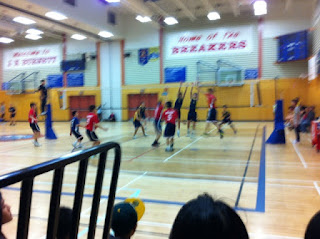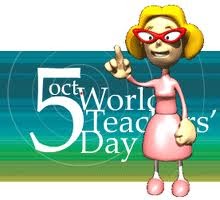As discussed in a previous post, I made it a priority this week to get into classrooms and see what is happening in our fantastic school. In my last entry, I wrote about how teachers were utilizing technology to enhance the learning in their classrooms. It was exciting to see the risks being taken and the sharing among colleagues, and the feedback from students was overwhelmingly positive. In this post, I want to look more closely at Student Engagement, focusing on several classes I observed during my own No Office Day, where students were fully immersed in their learning, this time without the aid of technology.
In the first period of the day, I was invited to watch presentations from students who had entered the Charmin Challenge (similar to what is seen here). Using toilet paper and pink garbage bags, Ms. Celine Jackson's Grade 9-12 Textiles students had to design, create and present outfits that signified what they felt it meant to be a woman, and brought attention to the fight against breast cancer. Students had to collaborate, problem-solve, think creatively and then present their efforts to the rest of the class. Each of the 6 presentations that I saw was a masterpiece and a creation that the students will be proud of for years to come.
In second period, I was invited to Ms. Stephanie Davis' Psychology 12 class. Students had been studying developmental milestones and had invited in a group of Preschool students from the neighboring West Richmond Community Centre. Our students had created games for the youngsters to play that would provide some insight into their developmental stages. The four-year old students excitedly entered the room and immediately engaged in the games being shown to them by the Burnett students. I observed several of our more "reserved" students suddenly transform into interactive and excited leaders. I asked one of them what they felt the difference between them and the 4-year olds was. He explained that the youngsters had no inhibitions and no reluctance to engage. He stated (and I agreed) that as we age, we often become more self-aware and thus less-willing to take chances with people we don't know. Fortunately, the enthusiasm of the kids was contagious and the entire room was alive with learning, interaction and engagement.
In third period, I followed our guests from the Psychology 12 class to Ms. Farrah Meralli and Ms. Stephanie Davis' Humanities 8 Incentive class. Under the guidance of student teacher Ms. Wendy Lai, students were to lead the children through some interactive games and craft building. The activities were designed to bring out the leadership skills in our students, since for much of the year there has been too much focus on marks accumulation and not enough on learning and building community (a common concern for many Burnett students). The activities were a smashing success for the class, since students, both young and older, were immersed in connecting with one another, getting out of their comfort zones and learning how to effectively communicate and share. Like in the Psychology class, it was amazing to watch how infectious the enthusiasm of the 4 year-olds was, how they took attention away from grades and marks, and put it on engaging and learning about self, each other, communication and sharing.
In last period, I was invited to watch Ms. Andrea Lam's Math 8 class, as the students were making presentations called "Iron Chef Burnett". The students had been studying fractions and as a way to bring the concept to life, Ms. Lam had them draw a food item, get into partners and then find a recipe that used those foods. The recipe would then need to be expanded from its original size to something that could feed a class of 30. This required converting fractions from mixed numbers to improper, and multiplying by another whole or improper fraction to make enough for 30. Students were encouraged to make the food and bring it to class. Many groups did and following the presentations of the mathematical steps they followed, a party was held. The students had to communicate with each other and to classmates during their presentations, they had to problem-solve, think creatively and like in the parabola lesson from my previous post, the real-life example made the concept so much easier to understand and much more memorable. I was so excited about sampling the products and talking with the students that I forgot to take any pictures. My apologies!
At the end of the day, I went to the gym to watch the annual Breaker Classic, a Senior Boys Volleyball tournament. The tournament featured 12 teams from around the Lower Mainland, and was organized and staffed entirely by students. The gym was alive with athletes, scorekeepers, referees, concessions stand staffers, team hosts and several coaches. Mr. Wes Bevan and former student Mr. David Tam, the team coaches and sponsor, oversaw the event, but allowed students to take the lead and make decisions about how to run it, what to sell, costs to be set and met etc. A project of this size is no small feat, but the students were up to the challenge, and after 2 solid days (all night Friday and Saturday from 8 AM until 7 PM), the feedback from the coaches and competitors was that it was an exceptionally well-run tournament. Events like these may not show up on a report card, but they comprise a significant part of the learning experience that is part of high-school life.
What I saw on just one Friday had students fully immersed in what they were doing. Through project-based learning they were developing critical thinking, problem-solving, communication, collaboration and so many more 21st Century skills. While student engagement is something that we need to continue to improve, I would argue that students can not be more engaged and developing skills that will greatly enhance their futures than what I saw on Friday.
I was so proud of and inspired by what I had seen, that I struggled to keep myself from getting emotional re-living the day with some colleagues. So, to all the critics of the education system, please take the time to actually set foot inside the schools in your neighborhood. I am sure you will be more than impressed by what you see. I know I was.











